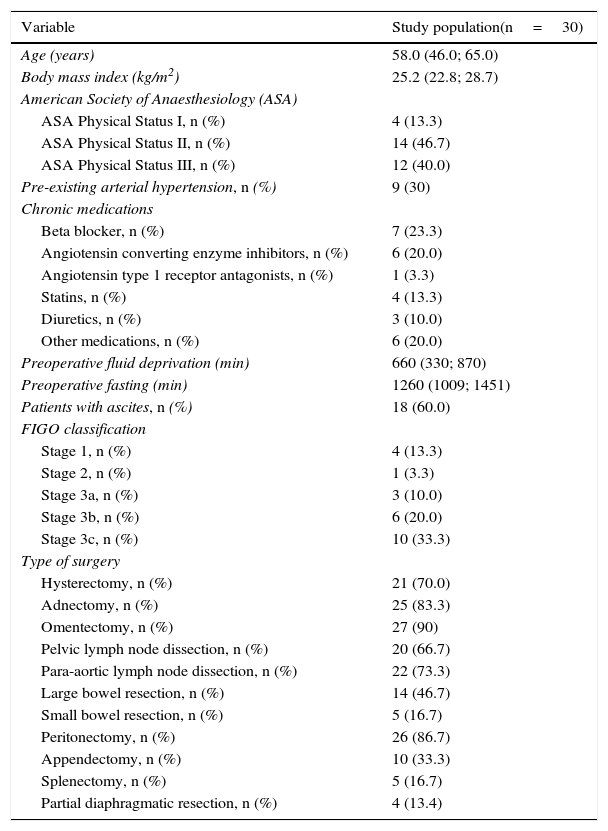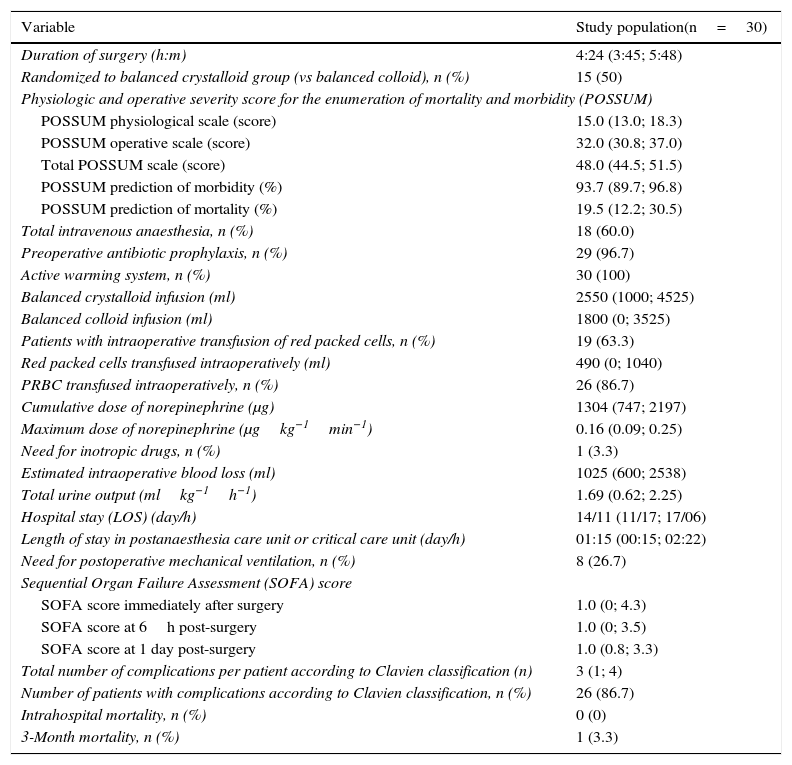Near-infrared spectroscopy combined with a vascular occlusion test (VOT) could indicate an impairment of microvascular reactivity (MVR) in septic patients by detecting changes in dynamic variables of muscle O2 saturation (StO2). However, in the perioperative context the consequences of surgical trauma on dynamic variables of muscle StO2 as indicators of MVR are still unknown.
MethodsThis study is a sub-analysis of a randomized controlled trial in patients with metastatic primary ovarian cancer undergoing debulking surgery, during which a goal-directed haemodynamic algorithm was applied using oesophageal Doppler. During a 3min VOT, near-infrared spectroscopy was used to assess dynamic variables arising from changes in muscle StO2.
ResultsAt the beginning of surgery, values of desaturation and recovery slope were comparable to values obtained in healthy volunteers. During the course of surgery, both desaturation and recovery slope showed a gradual decrease. Concomitantly, the study population underwent a transition to a surgically induced systemic inflammatory response state shown by a gradual increase in norepinephrine administration, heart rate, and interleukin-6, with a peak immediately after the end of surgery. Higher rates of norepinephrine and a higher heart rate were related to a faster decline in StO2 during vascular occlusion.
ConclusionsUsing near-infrared spectroscopy combined with a VOT during surgery showed a gradual deterioration of MVR in patients treated with optimal haemodynamic care. The deterioration of MVR was accompanied by the transition to a surgically induced systemic inflammatory response state.
En pacientes sépticos, la espectroscopia cercana a infrarrojos combinada con un test de oclusión vascular (VOT) puede indicar alteraciones de la reactividad microvascular (RMV) detectando cambios dinámicos de la saturación de oxígeno muscular (StO2). Sin embargo, se desconocen las consecuencias del trauma quirúrgico sobre la StO2 como indicador de RMV perioperatoria.
MétodosSubanálisis de un ensayo clínico aleatorizado en pacientes con metástasis de cáncer primario de ovario sometidos a cirugía citorreductora donde se aplicó un algoritmo de terapia hemodinámica dirigida a objetivo mediante doppler esofágico. Tras un VOT de 3min, se valoraron cambios dinámicos de la StO2 muscular mediante espectroscopia cercana a infrarrojo.
ResultadosAl inicio de la cirugía, los valores de desaturación y las pendientes de recuperación de valores basales fueron comparables a los valores obtenidos en voluntarios sanos pero ambas mostraron disminuciones progresivas durante el transcurso de la misma. Simultáneamente, la población a estudio sufrió una transición a un estado de respuesta inflamatoria sistémica por estrés quirúrgico, mostrándose por un incremento progresivo de los requerimientos de norepinefrina, de la frecuencia cardiaca y de interleucina 6, y produciéndose un pico inmediatamente tras la cirugía. Las dosis altas de norepinefrina y la frecuencia cardiaca se correlacionaron con una disminución más rápida de StO2 durante el VOT.
ConclusionesEl uso combinado de espectroscopia cercana a infrarrojo y VOT durante la cirugía mostró un deterioro progresivo de la RMV en pacientes hemodinámicamente tratados de forma óptima. El deterioro de la RMV se acompañó de una transición a un estado de respuesta inflamatoria sistémica inducida por cirugía.
Artículo
Comprando el artículo el PDF del mismo podrá ser descargado
Precio 19,34 €
Comprar ahora












